We selected some criteria to optimize the Bulgarian Squat exercise:
-Define loads that provide an effective personalized balance between submaximal strength, fast strength (more or less elastic-reactive), and endurance strength.
-A flat, reactive surface, with bare feet and/or shoes similar to weightlifting shoes, is most recommended for submaximal strength training. Stable and secure supports are necessary for loading and unloading high weights.
-We do not recommend performing exercises on very soft, unreactive surfaces with multiple axes of imbalance (such as on a Bosu or similar tools), due to their lack of applicability to the surfaces where we regularly move or practice sports.
-It is important to determine the position of the trunk and the placement of the load(s) due to their impact on the selective recruitment of the muscles around the knee and hip. An article advised by biomechanics professor Jesús Dapena (Bloomington University, US) will be very useful for coaches: CLICK HERE
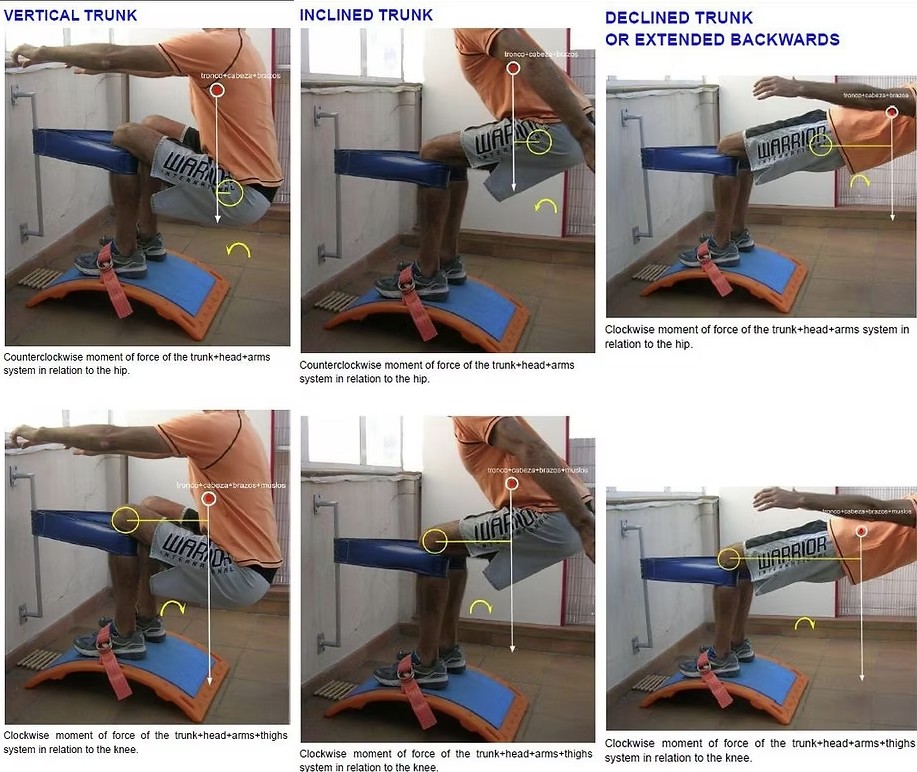
-Ensure that the knee’s axis of gravity is centered on the foot support, that the hip is not rotated to keep the spine well aligned, do not lean too far toward the back leg or flex it too much to avoid knee problems with high loads, and maintain the foot support with a balanced flexion-extension of the ankle.
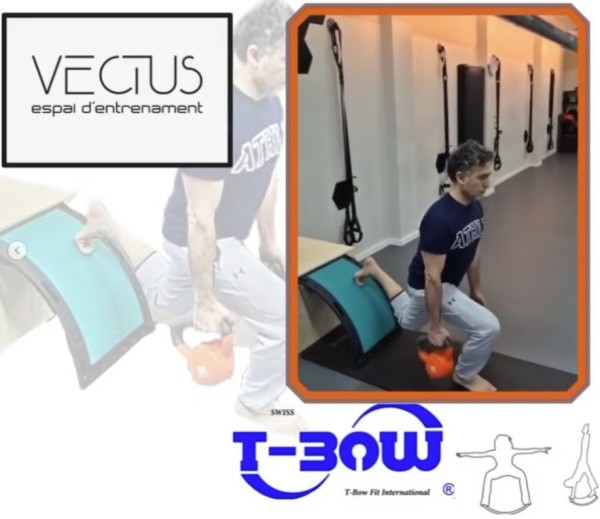
–
To optimize balance conditions of the Bulgarian Squat, combining them with flat-ground and reactive executions, we suggest executions on the T-BOW® with a single axis of imbalance and very reactive for fast and precise postural adjustments (see videos):
- Barefoot options on flat, reactive ground, placing the back foot on the arch of the T-BOW® on the T-Box®, which will allow you to adjust the height and provide stability.
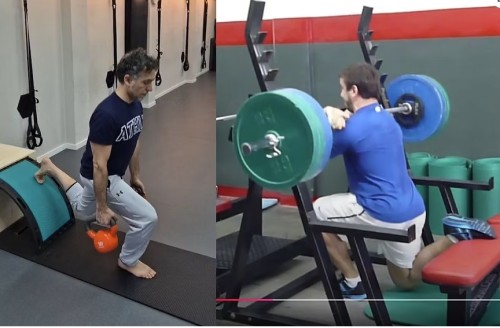
-Options for supporting the front foot on the convexity of the T-BOW® in a stable position, with an axis of imbalance longitudinal and transverse to the foot.
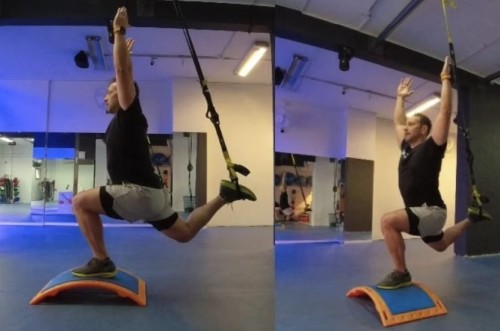
-Options for supporting the front foot on the convexity of the double T-BOW® in an unstable position, with an axis of imbalance longitudinal and transverse to the foot. Variations:
- (a) supporting the rear foot on the arch of the T-BOW® on the T-Box® (more stable)
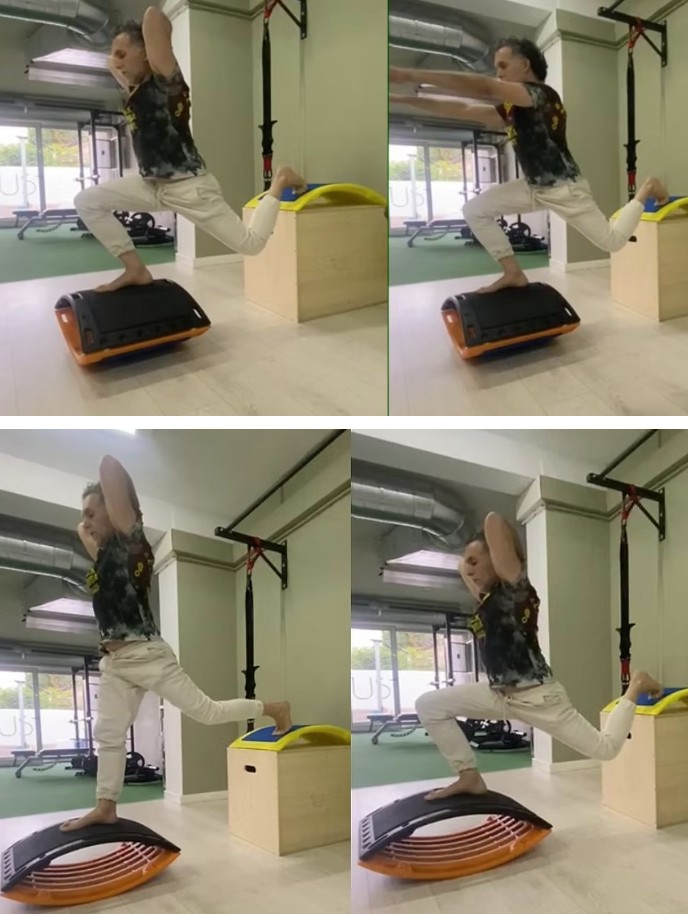
- (b) supporting the rear foot on a hanging strap (more unstable).
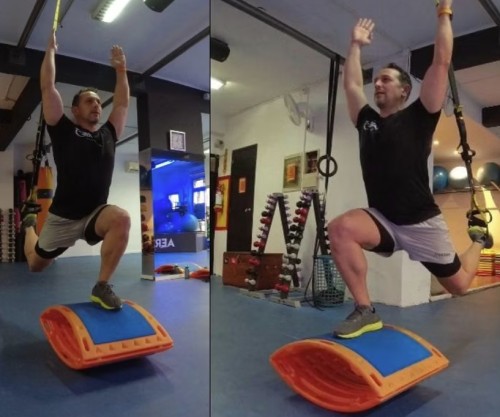
- Options for supporting the front foot on the concavity of the triple T-BOW® in an unstable position, with an axis of imbalance longitudinal and transverse to the foot.
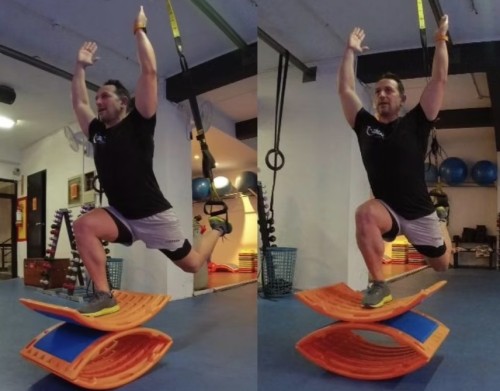
* Consider other biomechanical, sensory, and perceptual variations to enhance segmental and global balance.
* Consider both symmetrical and unilateral overloads, allowing you to modify the resistance moments through arm position and force application axes; using various materials, such as dumbbells, discs, and bars, as well as elastic bands and traction cables.

VIDEOS Bulgarian Squat Optimization with T-BOW®
* Barefoot options on flat, reactive ground, placing the back foot on the arch of the T-BOW® on the T-Box®, which will allow you to adjust the height and provide stability.
Bulgarian Squat Optimization with T-BOW® 1
* Options for supporting the front foot on the convexity of the T-BOW® in a stable position, with an axis of imbalance longitudinal and transverse to the foot.
Bulgarian Squat Optimization with T-BOW® 2
Bulgarian Squat Optimization with T-BOW® 3
* Options for supporting the front foot on the convexity of the double T-BOW® in an unstable position, with an axis of imbalance longitudinal and transverse to the foot. Variations:
(a) supporting the rear foot on the arch of the T-BOW® on the T-Box® (more stable),
Bulgarian Squat Optimization with T-BOW® 4
(b) supporting the rear foot on a hanging strap (more unstable).
Bulgarian Squat Optimization with T-BOW® 5
Bulgarian Squat Optimization with T-BOW® 6
* Options for supporting the front foot on the concavity of the triple T-BOW® in an unstable position, with an axis of imbalance longitudinal and transverse to the foot.
Bulgarian Squat Optimization with T-BOW® 7
Bulgarian Squat Optimization with T-BOW® 8
